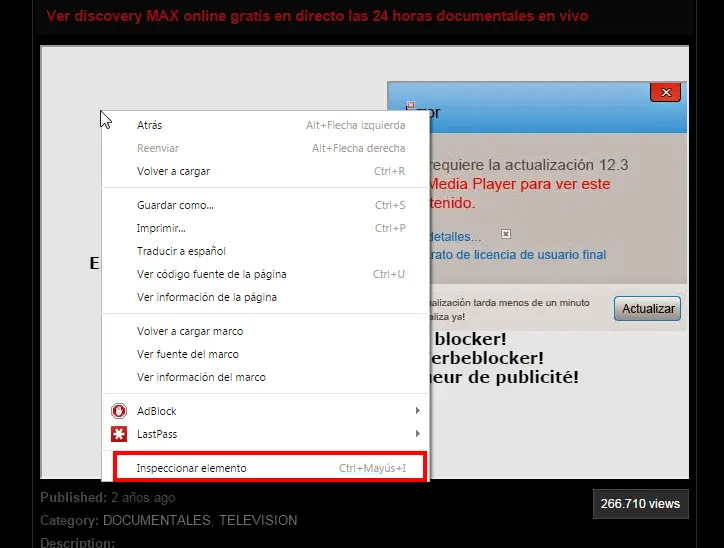Television and the Internet make a perfect team. The use of the Internet as a transmission system is a reality, although this is something that is difficult for certain “classic” media to understand.
New options for watching television through the Internet constantly emerge. Even the television networks themselves have chosen to broadcast their content through the Internet or offer their own platforms.
However, some more reluctant channels still do not broadcast their content through the Internet. Certain pages have found their business by broadcasting these channels, surrounded by huge amounts of ads.
Until recently, the use of ad blockers relieved the pressure from this abusive advertising. But now the pages have begun to detect the use of blockers, preventing us from viewing their content while they are activated.
In this post we will learn how to bypass this prohibition, and be able to view television channels without abusive advertising.
The important thing is not so much the details of the process (which may vary from one page to another) but the process itself. And above all, to illustrate that on the Internet no one can force you to see something you don’t want.
Eliminate abusive advertising
For the example, we are going to try to watch “Discovery Max” online (what can I say, I like the crab fishing program). Remember that the important thing is not the example itself, but to show the process. For the process we are going to use the Chrome browser, although the process is similar in any browser.
We start by searching on Google “discovery max online”. We choose one of the results that appear (in reality they are all practically the same, if not the same).
We see a page full of advertising and the channel viewer covered by a poster demanding that we disable Add Block. Are we going to do it? Not at all!
We right-click on the poster and select “Inspect element”.

The lower window of Google’s developer tools opens where we can observe the poison of the poor code of the page.
In summary of what we see, these pages use (excessive) nested iframes. That is, they put one page inside another page, inside another page, and in the middle they fill with layers and layers of advertising. We want to find the original page.
If you look a little above where the cursor jumped, we find the first iframe. Double click on its address, copy, and paste it into the address bar to go up one level.

Repeat the process until you reach a page with a single iframe. By inspecting the page’s code, you can avoid most or all of the jumps, and access the page directly in one step. If you can’t read the HTML code, it doesn’t matter, try little by little, in a few jumps you will get there anyway.

If at any time a poster, or any other element, you can remove it from the developer tools, simply by pressing the delete key.
On this last page, first we are going to remove the poster that demands disabling ad blockers. We right-click on it, select “Inspect Element”.
A little above where the cursor appears, we will see a div called “adb-enabled” (guess what it’s for). We delete it without mercy by pressing the Delete key. Goodbye poster!

Now we will remove the remaining layers of advertising. We look for a div called “divpubli” (they are so original with the names, aren’t they?). Select, press delete, and … sayonara advertising.

In fact, on this page, you can delete everything except the iframe, and within this everything except the div with ID=“jwplayer1_wrapper”, so the page would be reduced to this.

Now we can enjoy the broadcast without abusive advertising, and in the process we will have eliminated a lot of code and errors that alarmingly slow down your computer. Finally, if you are interested, save the page as a favorite to be able to access it directly next time.
The processes shown are presented solely for educational purposes, with the final responsibility for their use being exclusively the user’s. Although, as the saying goes, who steals from a thief…
